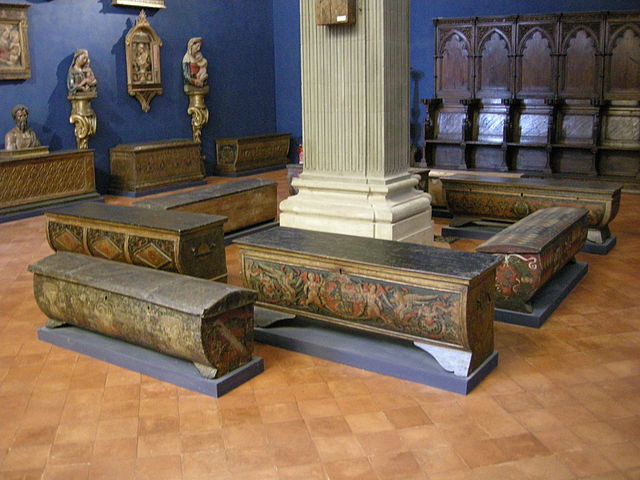A cassone or marriage chest is a rich and showy Italian type of chest, which may be inlaid or carved, prepared with gesso ground then painted and gilded. Pastiglia was decoration in low relief carved or moulded in gesso, and was very widely used. The cassone was one of the trophy furnishings of rich merchants and aristocrats in Italian culture, from the Late Middle Ages onward. The cassone was the most important piece of furniture of that time. It was given to a bride and placed in the bridal suite. It would be given to the bride during the wedding, and it was the bride's parents' contribution to the wedding.
Some cassoni, in the Museo Bardini, Florence
Florentine cassone from the 15th century (M.A.N., Madrid)
Walnut cassone in the form of an Antique sarcophagus, Rome, 16th century (Walters Art Museum)
A Trunk is a form of furniture typically of a rectangular structure with four walls and a removable or hinged lid, used for storage, usually of personal items. The interior space may be subdivided.
Mexican chest from the viceregal era, at the Franz Mayer Museum
German chest with metal band and locking mechanism, c. 1847
External tomb chest of Alejandro María Aguado, 1st Marquis of the Guadalquivir Marshes, at the Père-Lachaise Cemetery in Paris; made in 1844
Chest (petaca) from colonial Mexico, c. 1772; now in the Metropolitan Museum of Art







